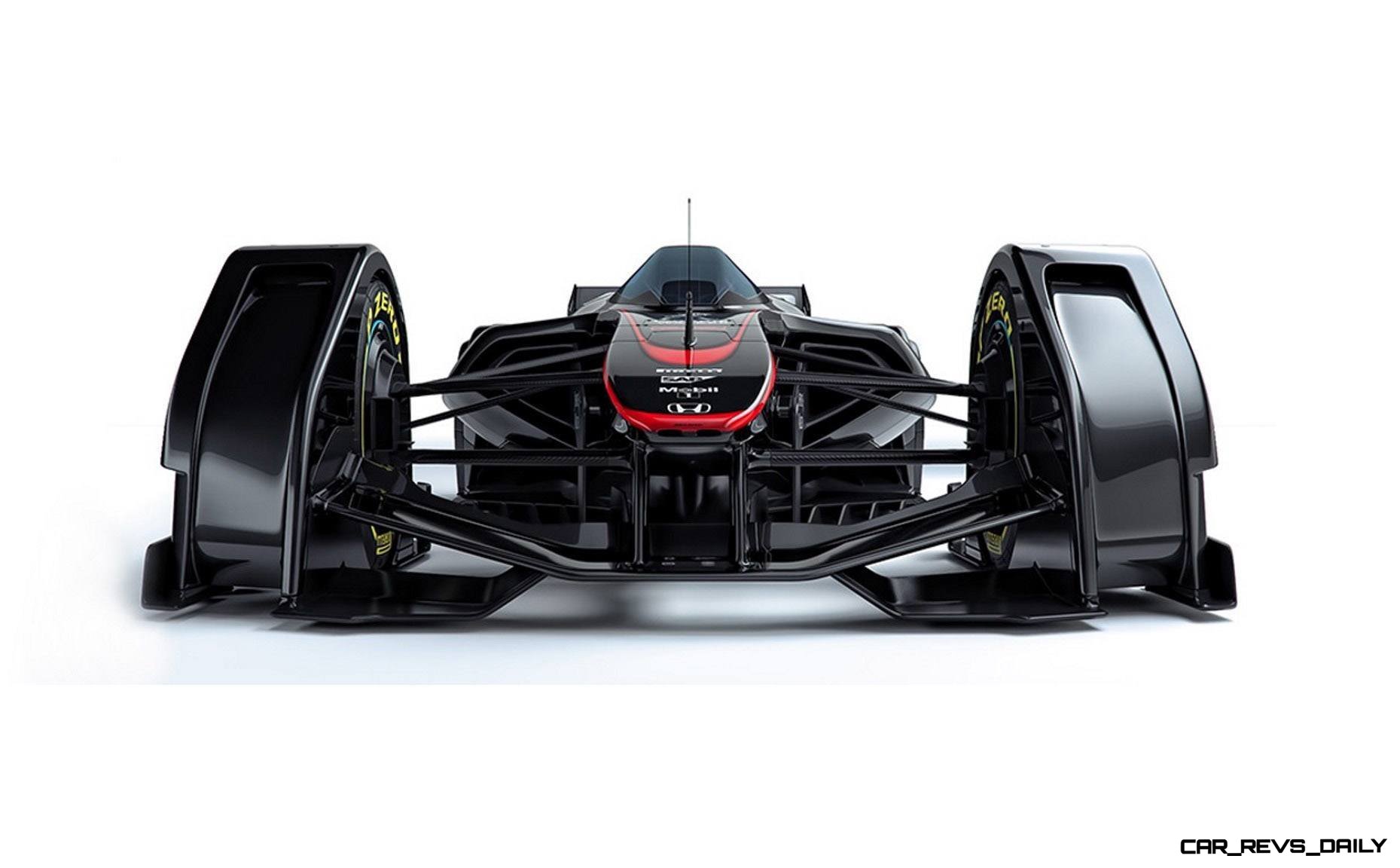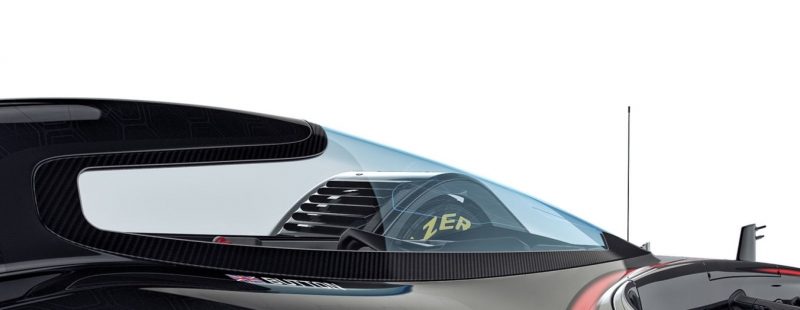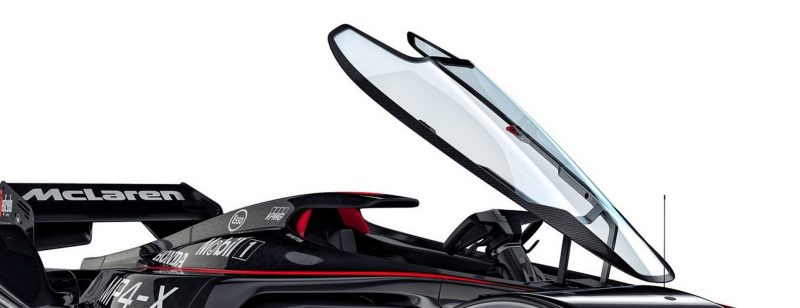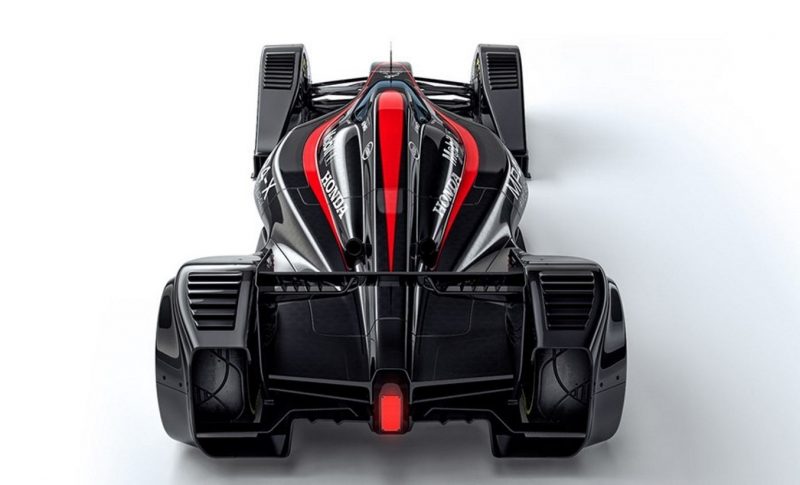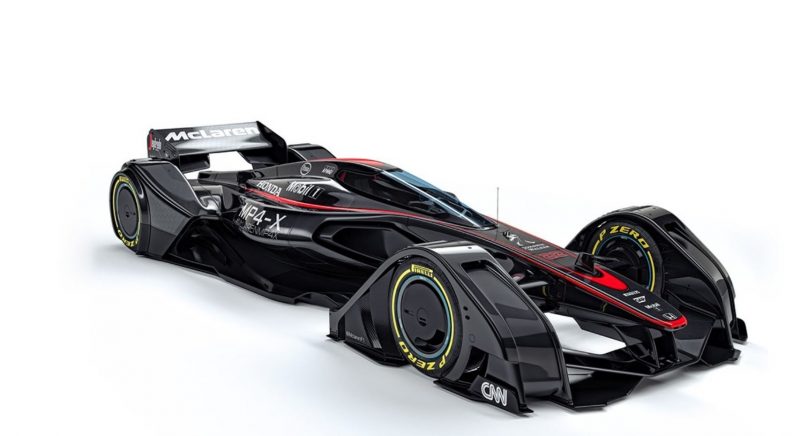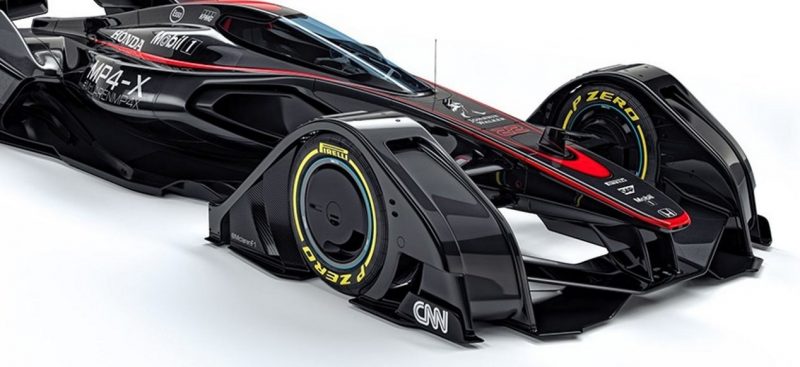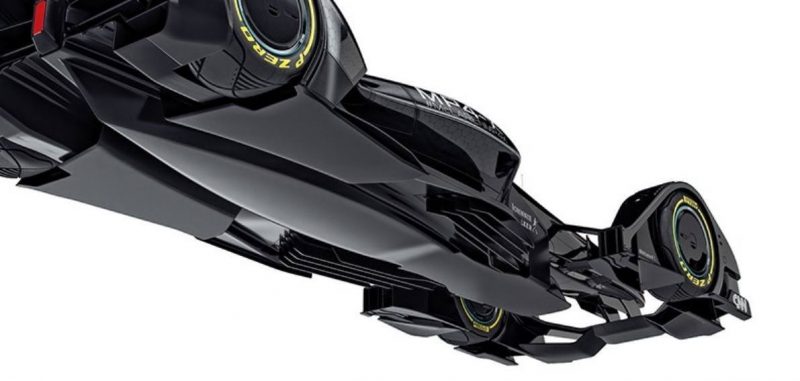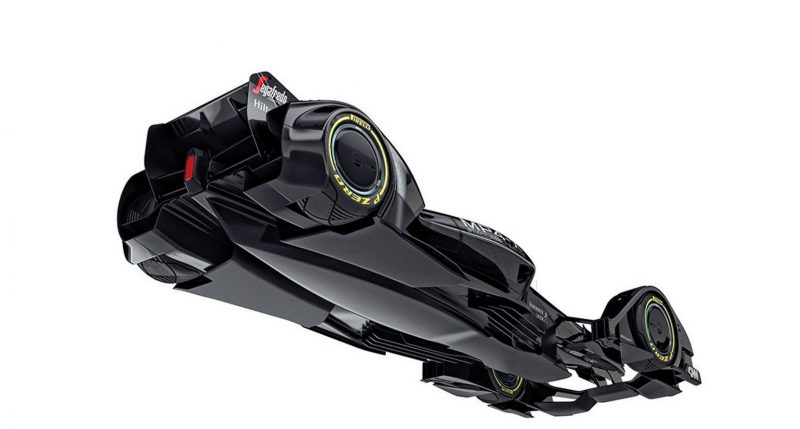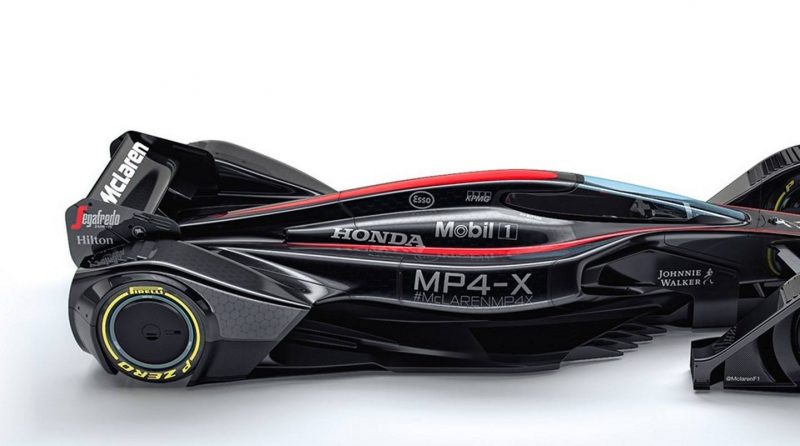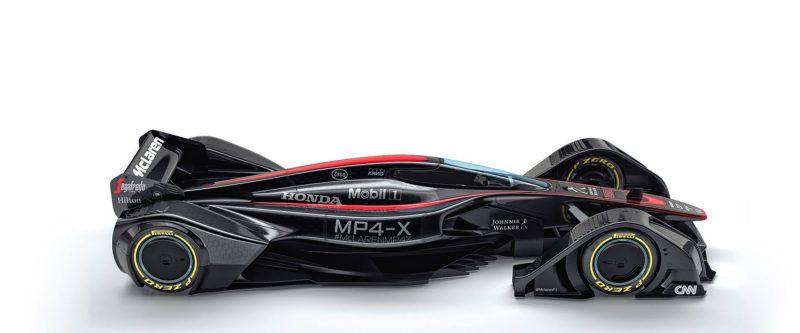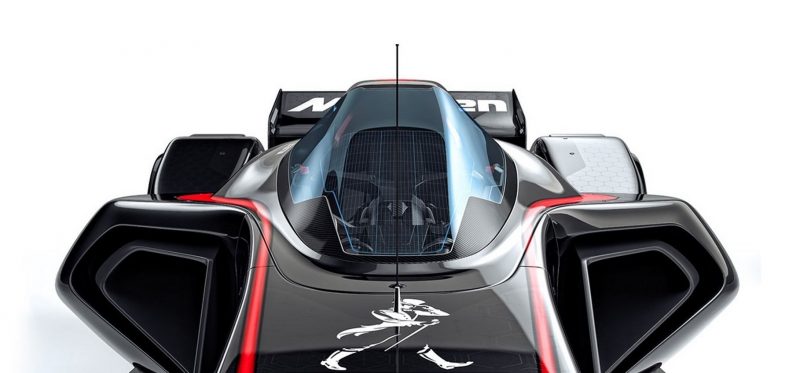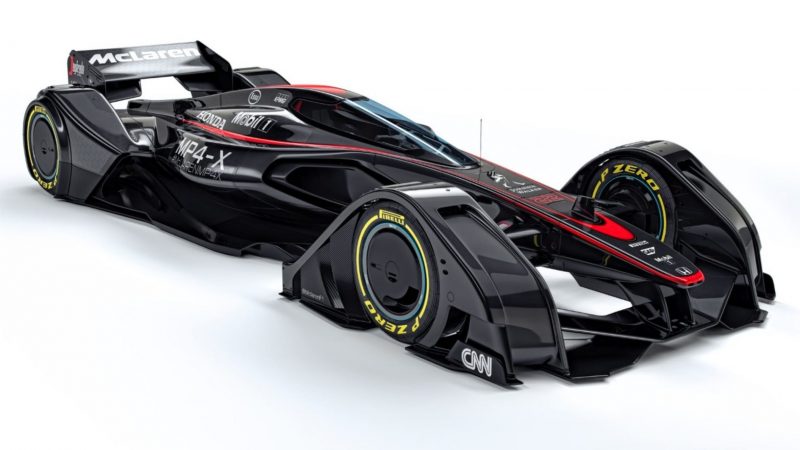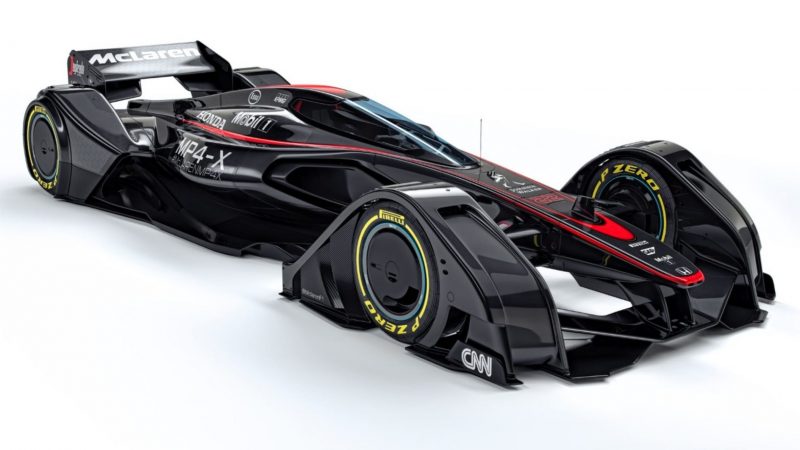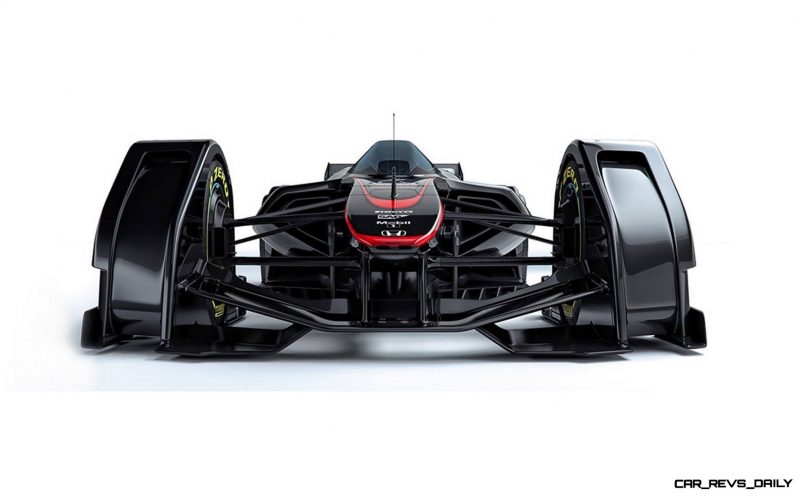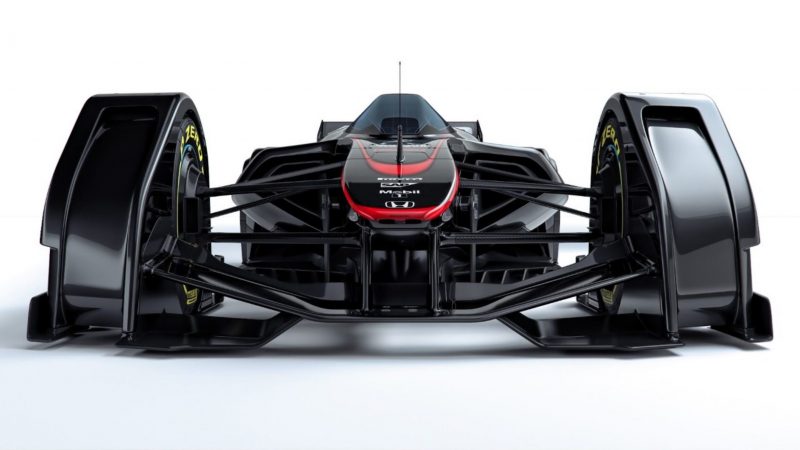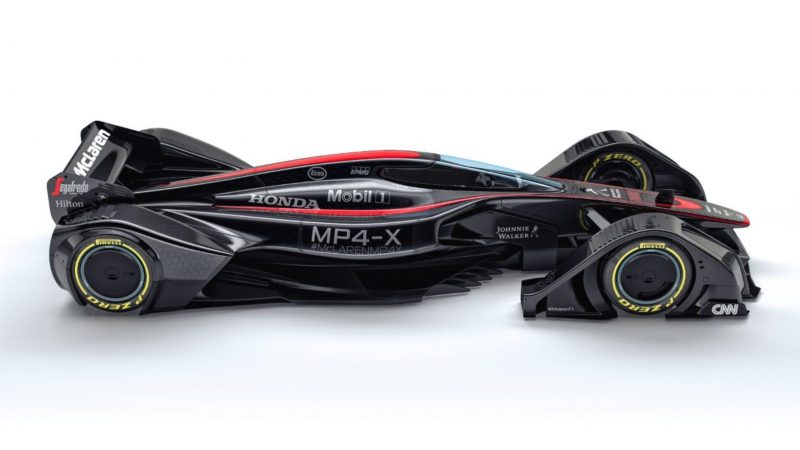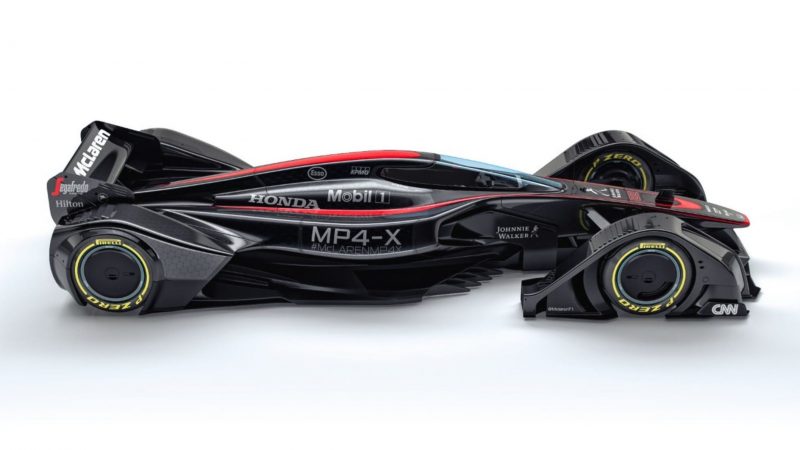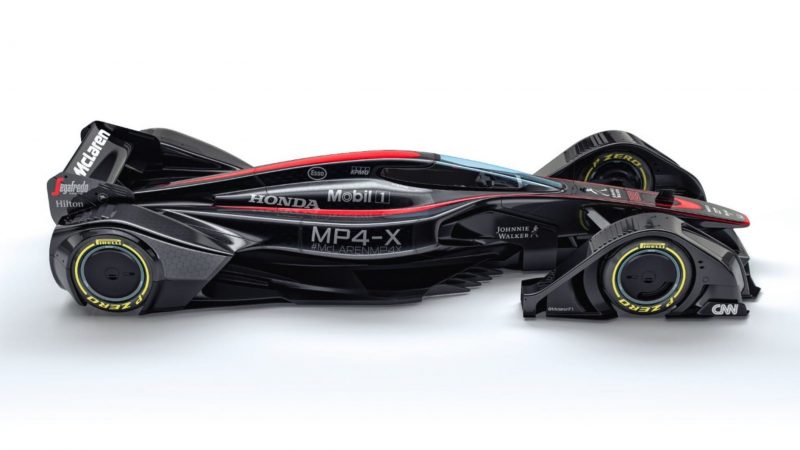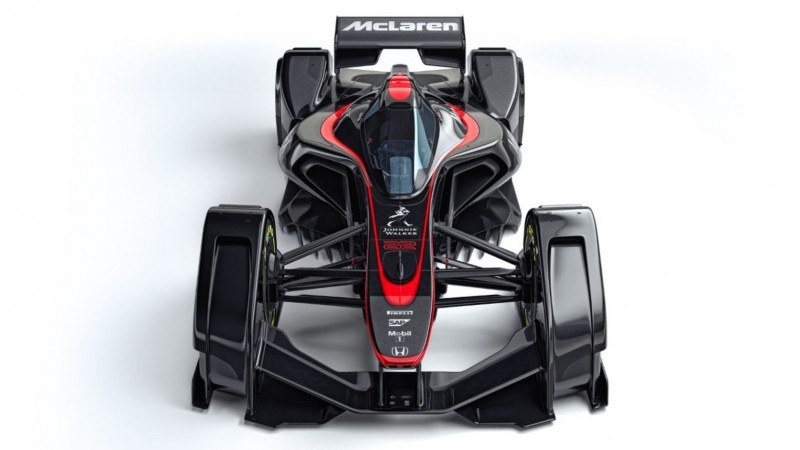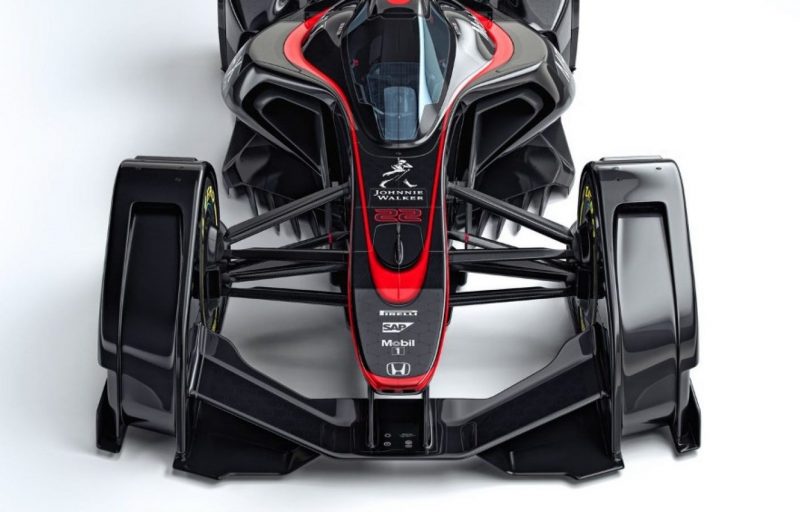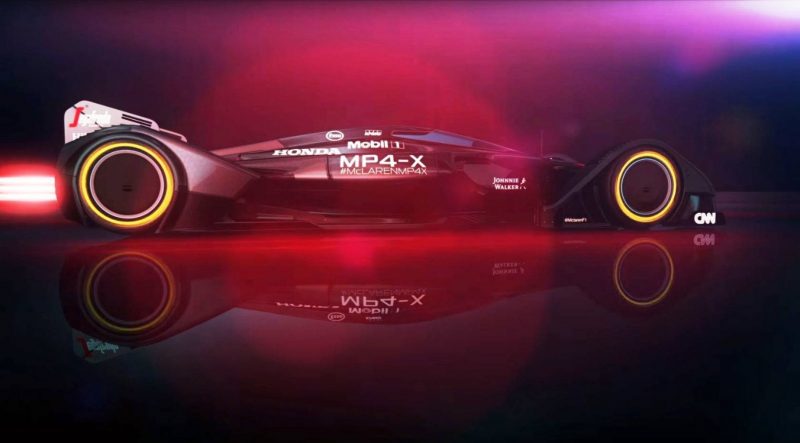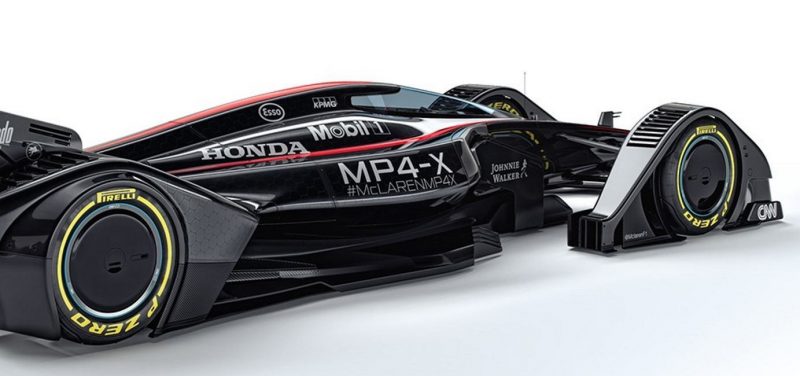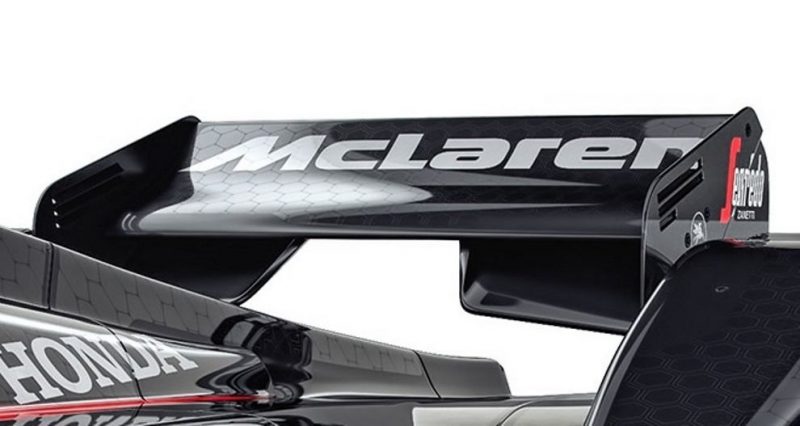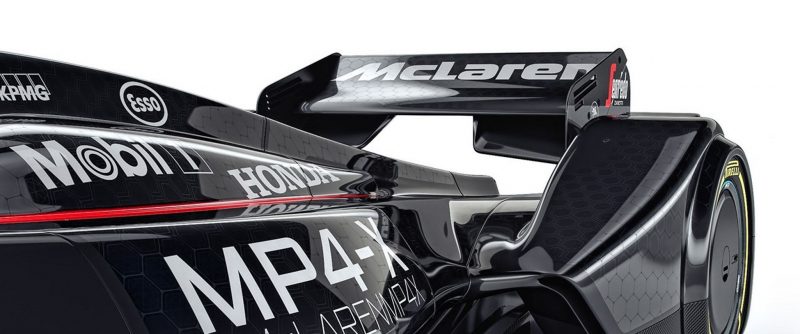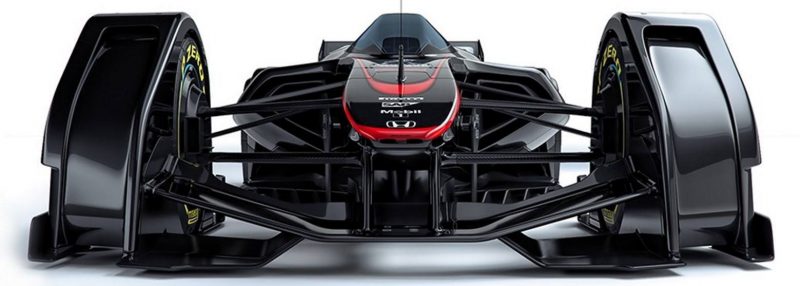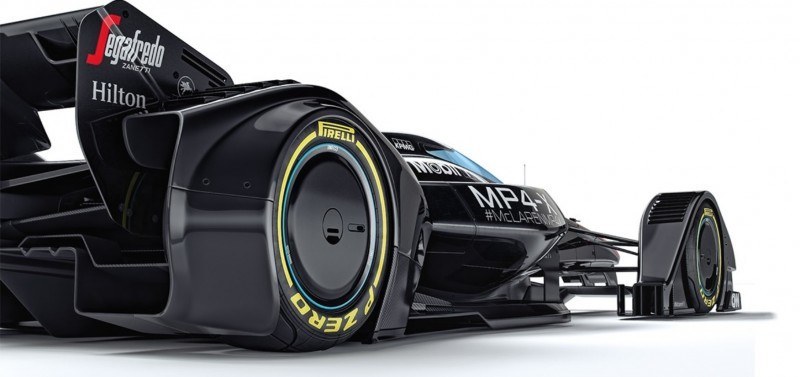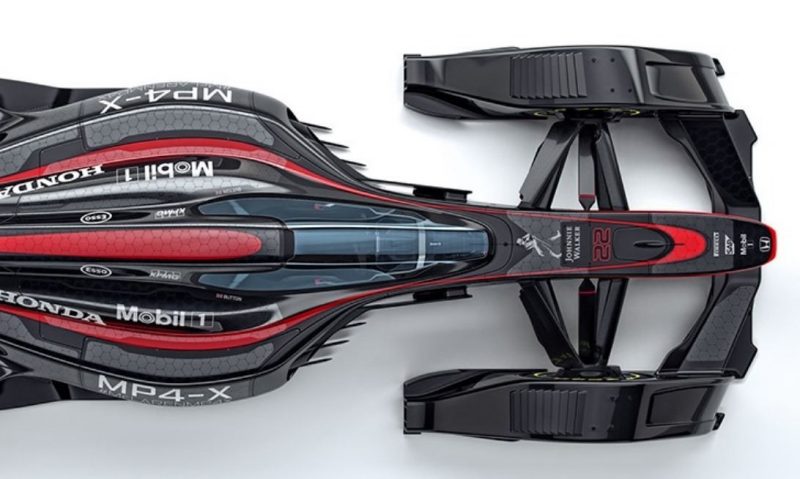This is much more than just a set of fantasy closed-cockpit renderings, as we first thought.
This is a deeply interesting revision of the F1 racecar theme — so advanced that it might not just replace the current open-wheeled racers. It might be even more fascinating to watch run alongside them in an alternative race class!
Call it FX1?
Whatever the case, this official MP4-X concept car from McLaren Applied Technologies is a chock full of applicable design elements that could be racing tomorrow, if the circumstances allowed.
The most noticeable change right off the bat is the closed and fully shrouded bodywork all around. Wheels, cockpit and engine compartment are now fully wrapped in Batmobile-style gills the slipstream wings at every edge.
Along with the aero-shrouded Pirelli tires, the fenders actually extend into a full downforce package of the future down below. Ground effect aero and electrode-fired main wing surfaces would allow instant bodyshape changes to match cornering angles or straightaway needs. These are near opposites: downforce in corners, and near-zero drag for the straights. AI modulation would take it to the next level, integrating with the full data-processing power of the car’s traction and e-boosters.
Solar cells lining the bodywork and synaptic controls mean one thing is not missing from this outstanding future-tech masterpiece: the driver!
Good to see.
Would be even cooler to see this design in a real-life, full-size mockup!
And after that… perhaps as the next F1 champ and P1 GTR….
McLaren MP4-X
Discover
Discover the art of the possible. A concept car like no other. We harnessed the most cutting-edge, avant-garde technological solutions that exist in the world today to create a racecar that could exist in the distant future.
As such, the technology that’s been applied to MP4-X is all real, even if it’s still in its earliest stages of conception.
McLaren Applied Technologies is at the forefront of the development of some of these new forms of tech – read their insights throughout this feature.
Scroll through our extensive gallery of images, learn more about the thinking behind some of the key technologies in use, and share your thoughts and opinions on both the car and the future of motorsports by using the hashtag #McLarenMP4X.
McLaren MP4-X Chassis
Advanced energy absorption technology
Driver safety is paramount in Formula 1,so improving the survivability of the monocoque from multiple hits can only be a good thing. Impact-prone and safety-critical areas of the car could make use of material advancements such as negative-stiffness material structures. These have the ability to attenuate energy transferred in an impact. However, instead of being permanently deformed, they have the resilience to recover their original shape and properties. This makes them effective in multiple impact events where they are still able to provide protection to the driver.
In-car diagnostics
The MP4-X would be constructed with a system to monitor the car’s structural condition; in the event of a failure or an impact, the car would be able to provide information and data to enable the engineers to more quickly understand what had happened.
“Extending the car’s existing ‘intelligence’, it could determine its own condition, enhance its performance, and provide extremely high-fidelity knowledge of its own structures. It would be a real step forward in terms of accident understanding, and, by extension, understanding ways to prevent future accidents,” says Tim Strafford, Head of Business Development, McLaren Applied Technologies.
McLaren Applied Technologies is already deploying its advanced remote condition understanding technology to real-time integrated drilling operations in the North Sea. Click here to find out more.
McLaren MP4-X Solar Cells
Solar cells for energy capture and boost
Higher efficiency of the cars in Formula 1 helps to increase the sustainability of the sport as a whole, and the MP4-X would couple solar energy capture with the more traditional regenerative systems that are currently employed. This is energy that can supplement existing onboard systems, or that can be deployed as a boost option.
Night races aside, whenever the cars are running in daylight there is a readily available source of usable energy – why not capture it to work in harmony with existing fuel-efficient technologies? If this technology was developed it could have huge benefits not only for drivers but the environment.
McLaren MP4-X Ground-Effect
Modern Formula 1 cars have had the potential for underbody aerodynamics increasingly emasculated by the regulations. But tear up the rulebook and you have a huge area to exploit. The MP4-X’s ground-effect floor would be expansive – huge venturi tunnels beneath the floor to create a massively powerful aerodynamic effect.
Ground effect was banned in Formula 1 in 1982 to limit costs and speeds, but it’s still successfully used in other single-seater formulas. With improved construction techniques, it could be safely harnessed.
In the past, it’s always been limited by the practicalities of the car layout – but remove the need for a large internal combustion engine and attendant fuel tank positioned close to the floor, and you suddenly open up the entire underbody for considerable aero exploitation.
McLaren MP4-X Canopy
Photochromatic and hydrophobic high-impact protective canopy
Formula 1 is currently wrestling with the idea of introducing protective structures or canopies in the wake of a number of serious or fatal single-seater accidents. While purists argue that it detracts from the notion of a conventional single-seater, and engineers struggle to find a solution that would work flawlessly, the drivers have largely acknowledged that its introduction makes eminent sense.
A canopy not only needs to be structurally incorporated into the chassis – and allow the cockpit to remain easily accessible in the event of a roll or accident – but needs to enhance or improve visibility. It could be more adaptive – to let the audience watching at the circuit or at home see inside in certain conditions, or to improve the driver’s visibility in low light or intense sunlight.
Jenson Button recently stated: “I was one of many drivers who said, ‘This is open-cockpit racing, it should stay as open-cockpit racing,’ but I think we’ve had enough now. We’ve got to get a canopy on the car of some sort, because we can’t have these sorts of accidents happening as much as they have over the last few years. It’s not the 1970s any more, we should know better. Canopies probably are the way to go, but obviously that takes time.”
McLaren MP4-X Active Aero
Active flow control
Electrodes fitted to the surface of the car’s wings would electronically control the bodywork, enabling downforce to be dialed in for cornering, then dialed out on the straights. By running a car with inherently stalled aero, powerfully charged electrodes could be switched on into corners to turn the air around the wings into plasma.
“Plasma flow control would require quite a lot of power, but, in the future, we could take power from the engine and divert it to charge the system.
“It’s banned in the current F1 regs – but it’s great for achieving high top speeds, particularly at circuits like Monza, where you want to shed all the downforce along the straights and then turn it back on again for the corners,” says Geoff McGrath, Chief Innovation Officer, McLaren Applied Technologies.
Morphing aerodynamic structures
The MP4-X would be fitted with advanced, adaptive shape-memory alloys that allow an electrical current to pass through them so they change shape under specific loads or particular conditions.
Geoff McGrath adds: “We looked at what technologies might be useful on a future road car – achieving lower drag for fuel-saving would be extremely useful. A morphing wing could locally adapt behind other cars. Sensor-driven control systems could adapt the wing, shaping local contours to match performance behaviours where required on track.”

Tom Burkart is the founder and managing editor of Car-Revs-Daily.com, an innovative and rapidly-expanding automotive news magazine.
He holds a Journalism JBA degree from the University of Wisconsin – Madison. Tom currently resides in Charleston, South Carolina with his two amazing dogs, Drake and Tank.
Mr. Burkart is available for all questions and concerns by email Tom(at)car-revs-daily.com.

